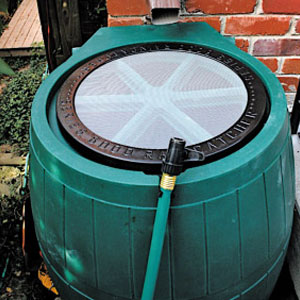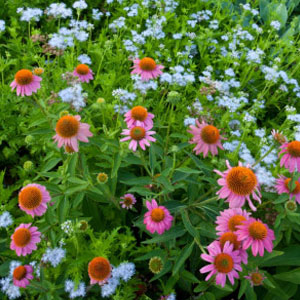
An elevated walkway limits disturbance to a fragile wetland habitat in Perth, Australia. Image credit: Syrinx Environmental
Protect and Restore Vegetated Buffers
In undisturbed natural areas, waterways and wetlands are typically protected by adjacent vegetation. Grassland, woodland and wetland plant communities naturally infiltrate and cleanse stormwater. Buffers along waterways and wetlands can also improve wildlife and fish habitat by providing food, shelter and shade. When vegetation is replaced by impervious surfaces, stormwater runoff volumes increase. Stormwater often carries pollutants including nutrients from fertilizers, pet wastes and sediment into natural water bodies. The pollutants reduce the overall water quality and negatively affect wildlife habitat. In residential areas, turf grass often extends all the way down to the water, polluting it with fertilizers and pesticides routinely used in lawn care.
In developed areas, vegetated buffers can fulfill the same important ecological functions as undisturbed waterside vegetation. As the name suggests, these are thickly vegetated strips of land that protect waterways and wetlands from polluted runoff and erosion. They also provide habitat for a variety of wildlife year round, including “stopover habitat” for migrating birds in spring and fall.
Research shows that as the width of a vegetated buffer increases, its environmental benefits also grow. Buffers less than 50 feet wide offer minimal protection, while those 200 to 300 feet wide improve water quality and protect aquatic habitats. Vegetated buffers more than 300 feet wide can function as wildlife corridors and even harbor imperiled and sensitive species.
How to create a vegetative buffer:
- Create a thickly vegetated and undisturbed buffer at least 50 feet wide. Riparian and coastal zones are often regulated; property owners should contact local and regional government agencies for information on appropriate vegetation buffers in their area.
- Avoid using pesticides or fertilizers — even organic fertilizers including compost — in a vegetated buffer.
- Undisturbed buffers provide the best protection. If access to the water is needed, create an elevated walkway made from untreated wood to protect the vegetation as much as possible.










